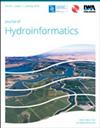利用先进的机器学习模型绘制越南义安的土壤侵蚀易感性地图
IF 2.2
3区 工程技术
Q3 COMPUTER SCIENCE, INTERDISCIPLINARY APPLICATIONS
引用次数: 0
摘要
土壤侵蚀易感性绘图(SESM)是管理和减轻土壤侵蚀的实用方法之一。本研究应用了四种机器学习(ML)模型,即多层感知器(MLP)分类器、AdaBoost、岭分类器和梯度提升分类器,在越南义安省的一个地区进行土壤侵蚀易感性绘图。这些模型的开发纳入了影响土壤侵蚀的七个因素:坡度、坡面、曲率、海拔、归一化植被指数(NDVI)、降雨量和土壤类型。这些因素是根据 685 个已确定的土壤侵蚀地点确定的。根据 SHapley Additive exPlanations(SHAP)分析,土壤类型是影响土壤侵蚀的最重要因素。在所有已开发的模型中,梯度提升分类器的预测能力最强,其次分别是 MLP 分类器、Ridge 分类器和 AdaBoost。因此,考虑到当地的地理环境因素,建议在其他地区也使用梯度提升分类器进行精确的 SESM 预测。本文章由计算机程序翻译,如有差异,请以英文原文为准。
Mapping of soil erosion susceptibility using advanced machine learning models at Nghe An, Vietnam
Soil Erosion Susceptibility Mapping (SESM) is one of the practical approaches for managing and mitigating soil erosion. This study applied four Machine Learning (ML) models namely the Multilayer Perceptron (MLP) classifier, AdaBoost, Ridge classifier, and Gradient Boosting classifier to perform SESM in a region of Nghe An province, Vietnam. The development of these models incorporated seven factors influencing soil erosion: slope degree, slope aspect, curvature, elevation, Normalized Difference Vegetation Index (NDVI), rainfall, and soil type. These factors were determined based on 685 identified soil erosion locations. According to SHapley Additive exPlanations (SHAP) analysis, soil type emerged as the most significant factor influencing soil erosion. Among all the developed models, the Gradient Boosting classifier demonstrated the highest prediction power, followed by the MLP classifier, Ridge classifier, and AdaBoost, respectively. Therefore, the Gradient Boosting classifier is recommended for accurate SESM in other regions too, taking into account the local geo-environmental factors.
求助全文
通过发布文献求助,成功后即可免费获取论文全文。
去求助
来源期刊

Journal of Hydroinformatics
工程技术-工程:土木
CiteScore
4.80
自引率
3.70%
发文量
59
审稿时长
3 months
期刊介绍:
Journal of Hydroinformatics is a peer-reviewed journal devoted to the application of information technology in the widest sense to problems of the aquatic environment. It promotes Hydroinformatics as a cross-disciplinary field of study, combining technological, human-sociological and more general environmental interests, including an ethical perspective.
 求助内容:
求助内容: 应助结果提醒方式:
应助结果提醒方式:


